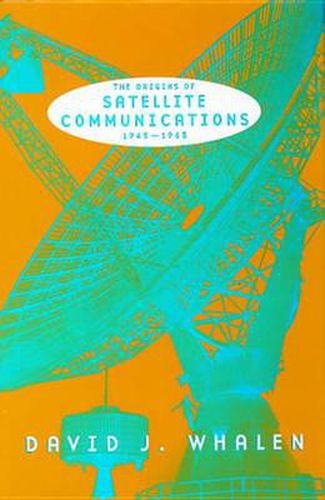Readings Newsletter
Become a Readings Member to make your shopping experience even easier.
Sign in or sign up for free!
You’re not far away from qualifying for FREE standard shipping within Australia
You’ve qualified for FREE standard shipping within Australia
The cart is loading…






Conventional assumptions hold that U.S. government research and development efforts produced the satellite communications industry. David J. Whalen has looked deeply into the history of the industry and presents remarkable new information to tell a much different story. He finds that most of the satellite technology was privately developed by AT&T and Hughes Aircraft Company, and that the market for satellite communications existed before the government stepped in. In this detailed history of satellite communication’s earliest years, Whalen explains that NASA, the White House, and Congress intervened in satellite communications development to show the world that the U.S. was in the space race and that the billions of dollars the U.S. government planned to spend would result in practical applications. He traces many different outcomes of government intervention, such as the marginalization of AT&T, who designed and paid for the first real communication satellite, Telstar 1; the positioning of Hughes as the dominant commercial satellite manufacturer; and the establishment of geosynchronous Earth orbit as the preferred orbit. Had the market been allowed to operate freely, AT&T would have launched their commercial low-earth-orbit telephone satellite in the 1960s. Many previous histories of satellite communications have emphasized government contributions; this version is the first to focus on the industry’s contributions.
$9.00 standard shipping within Australia
FREE standard shipping within Australia for orders over $100.00
Express & International shipping calculated at checkout
Conventional assumptions hold that U.S. government research and development efforts produced the satellite communications industry. David J. Whalen has looked deeply into the history of the industry and presents remarkable new information to tell a much different story. He finds that most of the satellite technology was privately developed by AT&T and Hughes Aircraft Company, and that the market for satellite communications existed before the government stepped in. In this detailed history of satellite communication’s earliest years, Whalen explains that NASA, the White House, and Congress intervened in satellite communications development to show the world that the U.S. was in the space race and that the billions of dollars the U.S. government planned to spend would result in practical applications. He traces many different outcomes of government intervention, such as the marginalization of AT&T, who designed and paid for the first real communication satellite, Telstar 1; the positioning of Hughes as the dominant commercial satellite manufacturer; and the establishment of geosynchronous Earth orbit as the preferred orbit. Had the market been allowed to operate freely, AT&T would have launched their commercial low-earth-orbit telephone satellite in the 1960s. Many previous histories of satellite communications have emphasized government contributions; this version is the first to focus on the industry’s contributions.